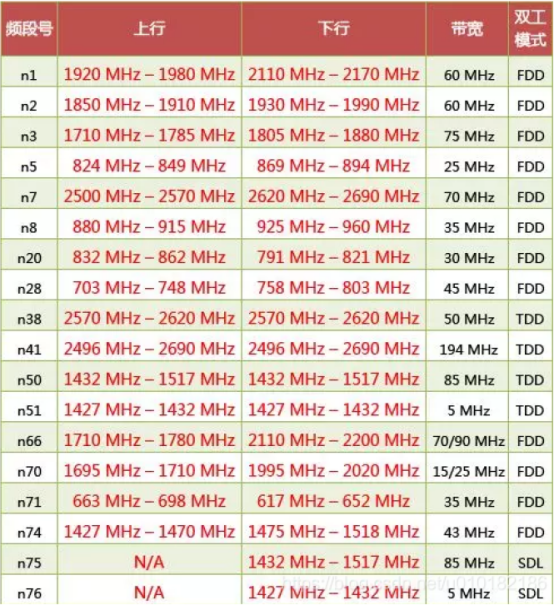After completing the 5G NR terminal capability verification of the National Radio Monitoring Center testing center, Shenzhen Fang Strategy Testing Co., Ltd. has successively completed the 5G NR terminal, Repeaters and other national regulatory tests, and obtained the corresponding certificates.

Analysis of 5G communication terminal test and certification requirements
5G NR band
According to the 3GPP version R15 definition, 5G NR includes two broad spectrum ranges (FR) :
| FR1 | 450MHz-6000MHz |
| FR2 | 24250MHz-52600MHz |
For the whole frequency range of FR1 and FR2, 3GPP is further divided.


5G operators use frequency bands
Technical standards used for RED certification
1. CONFORMITE EUROPEENNE
The purpose of CE certification is to unify the product certification within the EU;
2. Technical regulations:

CE terminal (5GNRFR1SA) technical standard corresponding to the test project

5 Precautions in GNR CE radio frequency test
1. Transmitter Maximum Output Power
① In the SA part, the involved situation is not complicated
It should be noted that the class level of the test band is clear, for n41, n77, n78, n79. The tolerances of having a class2 and class3 are also different. Our system has been able to make different adjustment tests for the two schemes.
When the transmission bandwidth is within 4MHz of the upper and lower ends of the band, the low-end tolerance can be exempted by 1.5dB.
② For the EN-DC part
The needs of EN-DC are discussed separately. Due to the total limited power, the transmitted power of UE needs to be shared between LTE and NR, and the communication network allocates power separately on the LTE side and NR side. The combined power of the two, there are two cases. One is far less than the maximum transmission power, and the other is greater than the maximum transmission power.
If the power of LTE+NR is less than the maximum transmit power, it is semi-static sharing. The power on both sides is controlled by the LTE and NR systems respectively, and the actual transmit power will not be greater than the maximum transmit power. It's actually very simple.
If the LTE+NR power is greater than the maximum transmit power, there is a time overlap when the two systems transmit. UE will transmit more power than the maximum power at certain times. In this case, UE needs to dynamically adjust the transmit power so that the actual transmit power does not exceed the maximum transmit power. The adjustment method is to reduce the power on the NR side, so that the total transmit power at all times in the NR side slot is not greater than the maximum transmit power, and the LTE transmit power is guaranteed first. The reason is that in EN-DC, LTE is the main carrier and has a higher priority.
2. Transmitter Minimum Output Power
For channel bandwidth (CBW)S20MHz, the limit is -40dBm, and this part still uses the LTE limit. For >20MHz bandwidth, the limit is based on 20MHz, and the conversion formula is -40dBm+10lg10(CBW/20MHz) (dB) according to the multiple of the bandwidth.
3. Transmit OFF power
In March 2021, the new SA test item is added in the new draft version, mainly to avoid communication interference caused by power leakage of UE transmitter to other UE or base stations during shutdown.
4. Transmitter Adjacent Channel Leakage Power Ratio
In the adjacent channel power leakage ratio test, the power is less than -50dBm, aiming at different power levels, the requirement of class2 is 31dB.class3 is 30dB.
5. Transmitter Spurious Emissions
In addition to the same requirements for 5th harmonics as LTE, the range of stray is extended to 26GHz for high frequencies above 5.2GHZ in the upper edge band.

6. Receiver Adjacent Channel Selectivity (ACS)
Bands with maximum frequencies below 2.7GHz are shown in the table. According to the bandwidth, less than 20MHz, basically equivalent to the LTE standard, higher than 20MHz, according to the bandwidth conversion.
The highest frequency band is greater than or equal to 3.3GHz, and the ACS of all bandwidths do not differ, and are required to be 33dB.

7. Receiver Spurious Emissions
Similar to the emission spurious range, the spurious range is expanded to 26GHz for high frequencies above 5.2GHz in the upper edge band.
8、Receiver Intermodulation Characteristic
Receiving intermodulation For receiving bands, divided into two categories, the maximum up/down frequency is less than 2.7GHz. And up/down frequencies greater than 3.3GHz target maximum bands less than 2.7GHz.
9、Receiver Blocking characteristics Receiver Spurious Response
Receive the blocked part. Receive spurious responses to such tests. For the highest frequency below 2.7GHz and the upstream and downstream higher than 3.3GHz, two different sets of test requirements are applied respectively to investigate the blocking characteristics mainly from the three aspects of in-band blocking, out-of-band blocking and narrowband blocking. The three types of blocking have similar requirements in parameter principle.
Strategic detection of 5G NR test system:


